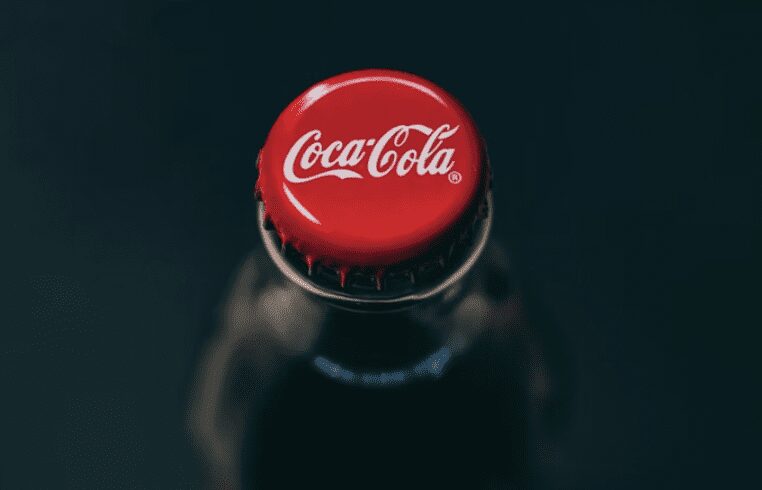R&D was introduced in 2000 for small companies and in 2002 for large companies in the UK. Brands such as Coca-Cola, Amazon, Nokia, Fitbit, and Nike have used research and development (R&D) incentives to claim tax credits.
In this article, we will begin by looking at Coca-Cola’s R&D tax-claiming project that began when the sugar tax was introduced in 2016. We will then finish off with a few more R&D claims made by other big companies through their innovations.
The requirements of the food and beverage industry
Before we begin, however, let’s have a look at what requirements must be met in order to claim R&D tax credits in the strict food and beverage industry:
- Sustainability.
- Healthier products.
- Process efficiency.
- Tastier.
- Meat substitutes.
- Faster production or chilling times.
- Improved defrosting and freezing.
What drives the food and beverage industry forward?
Consumer trends
Consumer trends might get blurred with a company’s marketing strategy. However, understanding food trends and “how can we reduce sugar?” or “how can we appeal to fitness fanatics?” helps companies discover what their consumers want and drive innovation.
Commercial factors
Furthermore, commercial factors are when the improvement of shelf-life is demanded. This may be from a distributor that cannot afford to see stock spoiling on the shelves. Likewise, it may be an efficiency drive, where making the food profitable for producers and affordable for consumers is essential.
Ethical factors
The ethical considerations cover enough for its section. Anything from recyclable packaging, animal welfare, and genetically modified food (GMO’s).
Process change
Generally, a lot goes behind the scenes of a research and development project in the food and beverage industry. Anything that requires an improved standard, an increase in output, or new and advanced machinery, must be tested to ensure that product remains consistent.
Legal and regulatory change
Above all, the most relevant for this article is when the government demands a new standard be met. Such as the new sugar tax in 2016, when it was decided that drinks containing more than 5g of sugar per 100ml would face a sugar levy. Certainly, these changes forced R&D project companies to reformulate their products without compromising taste. This leads us to the story of how Coca-Cola decided to outsource their R&D to the public.

The Coca-Cola R&D story to claiming R&D Tax credits
In 2018, after the “sugar levy” introduction, soft drink companies such as Coca-Cola could reduce their tax by claiming R&D credits on their project for innovations. Coca-Cola began adjusting their ingredients and found innovative ways to reduce sugar in their drinks.
As consumers are becoming more conscious and constantly demanding cleaner and healthier products, Coca-Cola decided to increase their efforts to uncover new non-sugar sweeteners for their products. However, Coca-Cola, took a different R&D approach with their project.
As a result, the company outsourced their R&D to the public to develop a naturally sourced, low-calorie, and low-sugar alternative that tasted like sugar while advertising it as Coca-Cola Zero Sugar. Evidently, hey discovered that their consumers did not taste the difference, and they did not realise zero equated to having any sugar. They experimented with the sweetener, Stevia, derived from the leafy shrub. Consequently, this is what then became the sweetener to help reduce the amount of sugar in Coca-Cola Life.
Their campaign was based on going directly to those who the new product was meant for, their consumers. For that reason, Coca-Cola decided to do two campaigns, both of which prizes were involved for the public to win.
The sweet story challenge to claiming R&D Tax
The first campaign was the ‘sweet story challenge’. They asked their consumers around the world to submit videos and written anecdotes about their favorite methods of naturally sweetening beverages in their families, communities, and cultures. The winner would receive $100,000.
The researchers and scientists to claiming R&D Tax
The second challenge depended on researchers and scientists to find sugar alternatives. Above all, the taste sensation of sugar when used in beverages needed to be as close as possible. This challenge offered the winner $1 million.
The reason for the challenges
The two challenges were based on the company’s desire to make the drinks their consumers wanted to drink. Coca-Cola’s willingness to find sugar alternatives that deliver great taste and that the people love, was to help to combat the rising problem of childhood obesity. Because of all age groups, children obtain a higher proportion of their sugar intake from soft drinks.
What made Coca-Cola successful at claiming R&D Tax credits?
Certainly, Coca-Cola’s new innovative drink not only met the legal and regulatory changes but they also met consumer trends, by appealing to an audience of consumer-conscious young males.
Other big companies that have claimed R&D Tax credits
Nokia in partnership with Alcatel-Lucent
In 2015 Nika utilised Alcatel-Lucent’s French R&D facilities in order to develop technologies including 5G. They established an investment of €100 million to leverage the R&D facility, and research the Internet of things (IoT), software platforms, and cyber security to enable next-generation networks.
Fitbit
Fitbit, the innovative watch that tracks Pure Pulse heart rate, was able to claim for their software engineering, hardware, interactive firmware, research, and industrial design.
Netflix
Netflix saved $389 million from tax credits by investing their money in developing new ways to entertain the public.
Amazon
Companies must constantly innovate to stay competitive, so Amazon and their cloud computing Amazon Web Services (AWS), have grown to become the most successful cloud service to date. Similarly, their Amazon Alexa has also become an innovative product benefiting society, which enabled them to claim R&D tax credits.
Nike
Furthermore, Nike, famous for being an innovative, disruptive brand, has reinvented the way it manufactures shoes. The Nike Sports Research Laboratory (NSRL) R&D projects aim to identify the physiological needs of athletes. With their findings, Nike can design and develop products based on the research from muscle sensors, pressure platforms, breath analysis, and foot scanners. Allowing Nike to create the best-selling sports shoes with athletes in mind.
Are you looking to claim R&D Tax credits?
FI Group firmly believes that companies helping society evolve through innovation should be encouraged and able to access R&D tax credits to offset some of their costs. If you and your company are in the process of innovative R&D projects, contact us here to find out how we can help. We look forward to speaking with you and guiding your business through the R&D process.
Read other related articles
- What innovation grants are available in the UK?
- What are the benefits of quarterly R&D tax reporting compared to yearly reporting?
